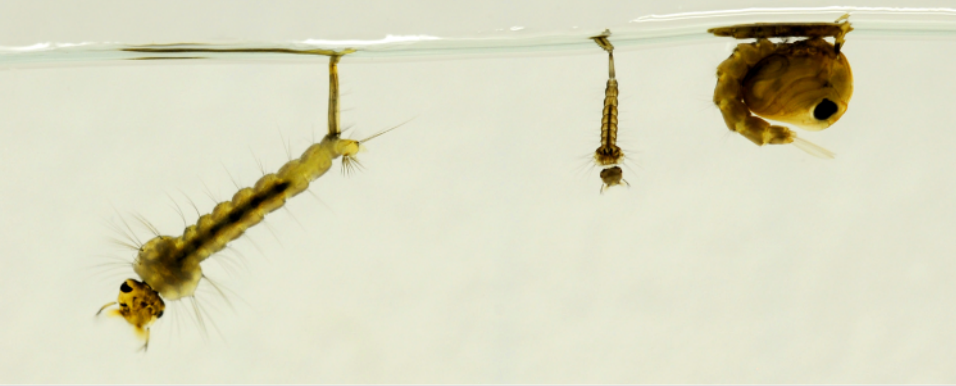Diptera: Culicidae
Author: Elmer Gray, Public Health Specialist & Entomologist, University of Georgia, 2022
Sydney Weigand (Ed.), 2025
Description
Immature stages: During their first stage of development, larvae are small (about 1 mm) and almost see-through. As they progress through subsequent stages, they grow to nearly 1 cm. The pupal stage appears with the fourth molt.
Adult stages: Adult mosquitoes are true flies that measure about 1 cm long. They have long, thin legs, wings, and antennae. Male mosquitoes’ antennae appear feathery. Their long, thin mouthparts form a proboscis, and these set them apart visually from similar-looking other flies.
Biology
Life Cycle: Mosquitoes deposit eggs on the surface of standing bodies of water, such as salt marshes, swamps, roadside ditches. They will also target containers where water can collect, such as tires, buckets and planters, and various drainage systems. After eggs hatch, larvae develop through four stages.
Under ideal conditions of warm temperatures and abundant food, larvae can move into the pupal stage after only 5-6 days. They remain in this transitional stage for about 2-3 days. Both male and female mosquitoes feed on nectar and plant juices to provide energy for flight, but only female mosquitoes seek a blood meal for the nutrients needed to stimulate egg production.
Distribution: There are 63 known species of mosquitoes in Georgia, but only 10-12 are pests to man. The saltmarsh mosquitoes Aedes taeniorhynchus and Ae. sollicitans are common pests along the coast. Culex quinquefasciatus is the primary vector of West Nile virus and Ae. albopictus is the most common container-breeder.
Damage
Female mosquitoes transmit illness when they bite. These mosquito-borne diseases account for hundreds of thousands of human deaths each year and include Malaria, West Nile virus, Eastern equine encephalitis, Chikungunya virus, and dengue.
Management
Standing water must be eliminated wherever possible. Containers and common yard items like planters, tarps, tires, and drainage pipes are particularly problematic. Larval populations that can’t be eliminated through source reduction can be treated with approved larvicides. If nuisance or public health risks are identified, targeted adulticide applications can be initiated, preferably in the evening to minimize contact with pollinators.


